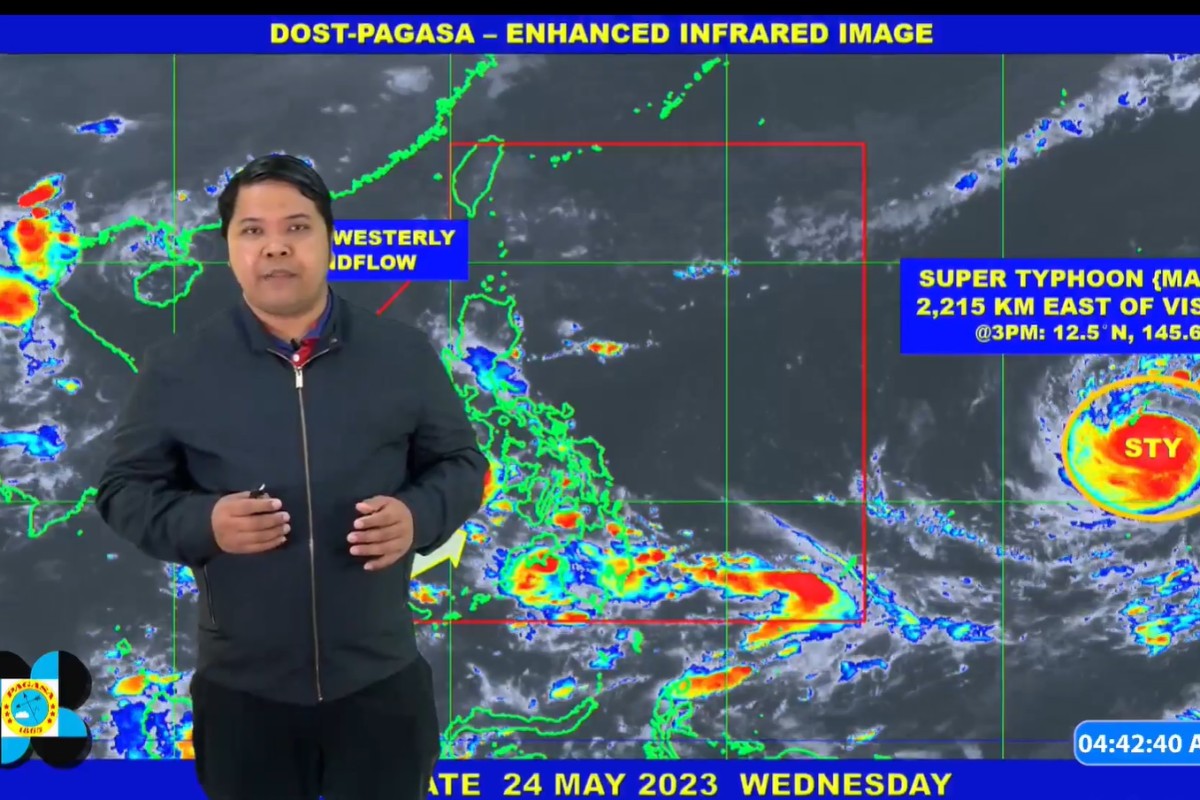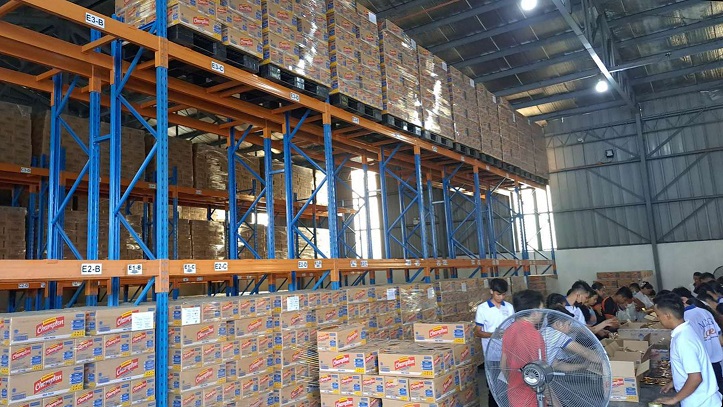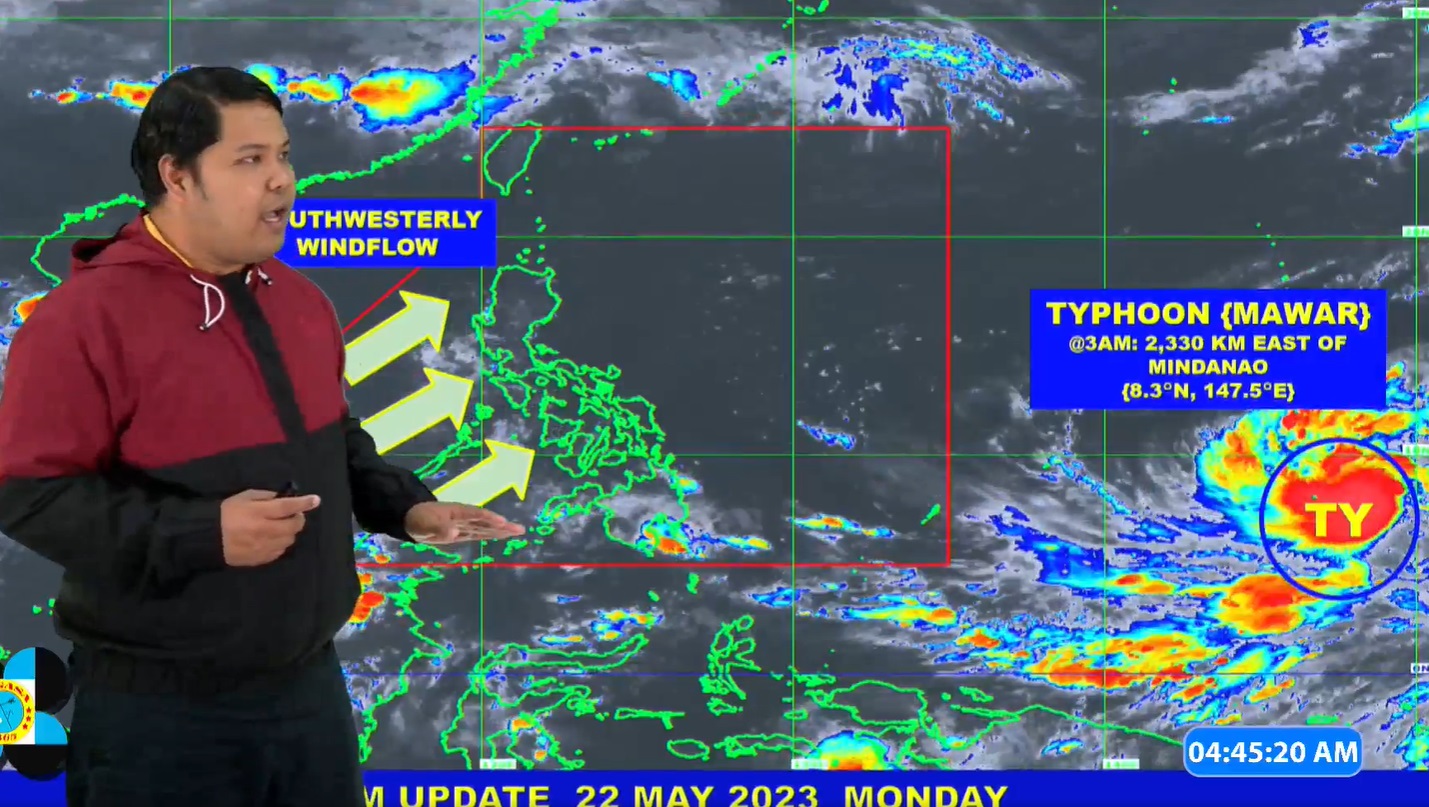QUEZON CITY (PIA) -- The public is advised to conduct safety preparations in expectation of a Super Typhoon entering the Philippine Area of Responsibility on late Friday or early Saturday.
Although the storm is not expected to make landfall and will not directly affect the country’s weather system, it may enhance the southwest monsoon or habagat. This may bring heavy rains to the western sections of Luzon, Visayas, and Mindanao on Sunday or early next week.
As of 3 a.m. today, Super Typhoon ‘Mawar’ (international name) is 2,215 km East of Visayas (12.5°N, 145.8°E) and is slowly moving Northwestward. It has maximum sustained winds of 185 kph near the center and gustiness up to 230 kph.
In preparation, the Department of the Interior and Local Government (DILG) has instructed all its Regional Directors to coordinate with their respective Regional Disaster Risk Reduction and Management Councils (RDDRMCs) and to remind all local government units (LGUs) to prepare for the typhoon.
They are also ordered to utilize HazardHunterPH to generate indicative hazard assessment reports on their respective jurisdictions.
Local DRRMCs are also directed to convene and conduct pre-disaster risk assessments for floods, flash floods, rain-induced landslides, debris flow, and strong winds. They must also continuously inform and advise the communities of situation updates and preparations.
Meanwhile, the Department of Social Welfare and Development (DSWD) has already prepositioned a total of 797,051 family food packs (FFPs) as stockpiled at the different regional offices with an aggregate amount of P 565.78 million.
In addition, there are 110,667 FFPs available in Disaster Response Centers, with the breakdown as follows: 101,525 FFPS at the National Resource Operations Center (NROC) in Pasay City and 9,142 FFPs at the Visayas Disaster Resource Center.
DSWD also has P 579.89 million Quick Response Fund at the Central Office while P69.77 million are available at the DSWD Field Offices.
The Department of Health (DOH) has also advised the public to conduct the following safety preparations:
1. Understand signs of an emergency. This includes monitoring weather updates and following the Early Warning Systems in the community;
2. Prepare your home and inspect it for necessary repairs. Reinforce and tightly close the windows, and doors and secure the electrical main switch. Moreover, secure important documents and if in a flood-prone area elevate furniture and appliances;
3. Know the emergency contact numbers and create an evacuation plan to the higher safe ground; and
4. Prepare an emergency go bag that includes ready-to-eat food, clean drinking water, clothes, a first aid kit, sleeping bags, and a COVID-19 protection kit for the whole family that would last for at least 3 days.
Although this typhoon is not expected to make landfall, everyone is still advised to continue monitoring for updates and adhere to the instructions of the local disaster and emergency risk team for safety. (KSAA – PIA CPSD)





